Why The Datsun 240-Z Is A "Lightweight" Sports/GT


by: Carl Beck
as of: 19 March 2003
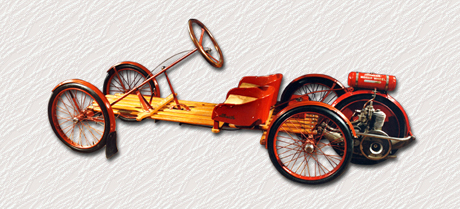
One of the worlds best Sports Cars traces its origins back to the worlds first Sport Car, the A. O. Smith Flyer of 1914.
Briggs and Stratton found that the "Motor Wheel" had many applications, one being a towing device for skaters as pictured on the right.{photo from Briggs and Stratton Web Site}
Briggs & Stratton re-engineered the 1-1/2 horsepower Type "C" Smith Motor Wheel into a 2 horsepower Type "D" Briggs & Stratton Motor Wheel.
In 1925, when Yutaka Katayama (aka Mr. K) was about 16 years old he saw a Briggs Ultra Lightweight Car being driven in Japan. It left a life long impression on him. Light weight meant better efficiency and better performance.
Over the years that followed that first sighting of the world's First Sports Car; Mr. K dreamed of building his own lightweight car. He wanted to use as many motorcycle parts as possible to keep the weight of the car down so that both performance and economy could be realized. Mr. K dreamed of a lightweight and efficient automobile - much the same as a Gull in flight - the name "Flying Feather" formed in his mind. (the Smith/Briggs "Flyer" evolved into a passenger car that was still light as a feather).
With the end of WW-II Japan entered it's "Golden Age Of The Motorcycle". Mr. K started envisioning the car he had wanted to build ever since he had seen the "Briggs". Having worked for Nissan before WW-II, Mr. K rejoined Nissan Motors when it was reformed in 1947. There he had occasion to meet with Mr. Ryuichi Tomiya in the late 40's (around 1949). Ryuichi had been an automotive body designer for Nissan before the war and was considered to be a genius of invention and design, he was called the Leonardo da Vinci of Japan.
On one occasion, Mr. K had the opportunity to discussed his dreams of building a light weight car with Ryuichi, and on the spot Ryuichi drew up a sketch that was to become the foundation of design for the Flying Feather.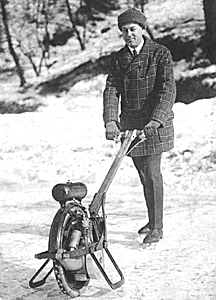 By 1919, the Briggs & Stratton Company had acquired the patents and manufacturing sales rights to the A.O. Smith "Motor Wheel" (right) and the "Flyer" it propelled. There after it was called the "Briggs Flyer" or the "Briggs Ultra-light".
By 1919, the Briggs & Stratton Company had acquired the patents and manufacturing sales rights to the A.O. Smith "Motor Wheel" (right) and the "Flyer" it propelled. There after it was called the "Briggs Flyer" or the "Briggs Ultra-light".
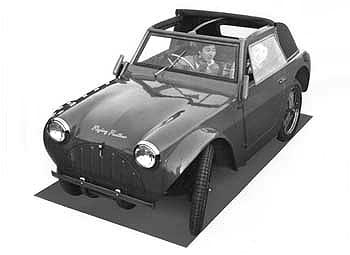
Mr. K then talked Suminoe Manufacturing, a subcontractor to Nissan Motors (they produced interiors for Datsun), into building the prototype of the Flying Feather for Mr. K. The Flying Feather prototype was completed by late 1951. Powered by a rear mounted V2 configured, overhead valve, four cycle engine produced in-house by Suminoe (we think??).
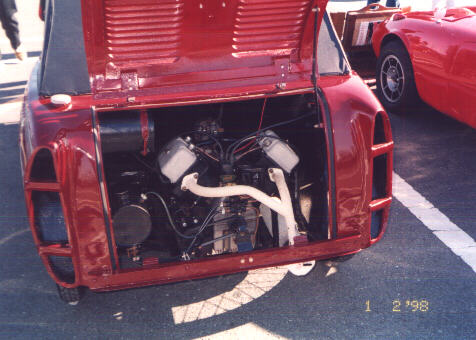
A short time thereafter, around 1952- 1953 the idea of promoting a "National Car" was being finalized by MITI and designs were being solicited. ( kind of a VW for post war Japan) Mr. K introduced his concept to MITI's Koshiro Koshida, Akira Kawahara, Souji Mizuno and a few others.
With MITI support, the Flying Feather went into limited production at Suminoe Manufacturing and about 150 units were produced between 1954 and 1955. The country wasn't ready yet for personal transportation and the Flying Feather never really took off. Production ended in 1955 and today there are only a few left in existence.
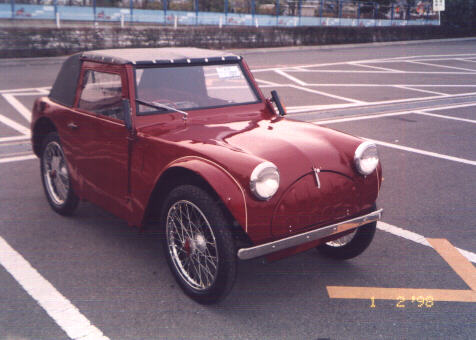
It was strange that Mr. K was not criticized for carrying out such a personal project, while still a Nissan employee. Nonetheless his childhood dream of making an affordable, lightweight car for people was realized.
The concept of an affordable, lightweight car was a cornerstone firmly in place in Mr. K's mind by the time the design and development of the Datsun 240-Z started in 1966.
Mr. A.O. Smith and his son L.R. Smith became the first father and son to be inducted into the Automotive Hall Of Fame at Dearborn, Michigan; in 1988 along with the "Flyer" the Worlds First Sports Car.
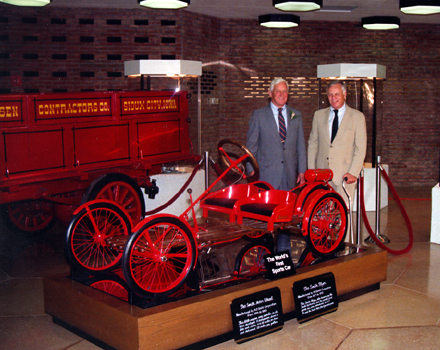
Mr. Yutaka Katayama, the Father of the Datsun 240-Z was inducted into the Automotive Hall Of Fame at Dearborn, Michigan in 1998.
For more information about: The original "Flyer" I encourage you to visit both the A.O.Smith Corporation Web Site at: http://www.aosmith.com and the Briggs and Stratton Company Web Site at: http://www.briggsandstratton.com/ The rich history of both these companies shows the creativity, innovation and entrepreneurial spirit that built this great nation and inspired people around the world.